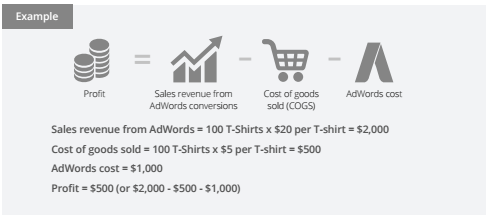
If you have ever advertised anything online, it’s a fair bet you have come across Google AdWords at least once. This industry standard marketing tool, like all complex machines, can have a massive impact on your business when used correctly. One aspect of this complex marketing machine is budget management. Below are three steps marketers can take to get the most bang for their AdWords buck.
1. Know what AdWords is making for you:
In order to continue best budgeting practices and profit optimization, measuring results is crucial. A simple way to do this is to choose an AdWords campaign that generates the most conversions or sales for your account and track the conversions. With additional tools like AdWord’s conversion tracking, you can see exactly where your conversions are coming from and readjust efforts as needed. To confirm the profitability of your chosen campaign, simply subtract your AdWords cost and the cost you paid for the product from sales revenue from your AdWords conversions.

2. Know how much to spend:
With AdWords, budgeting can be a delicate balancing act. You want to have enough budget to show your ads as much as possible to as many customers as possible. To avoid budgeting blunders, Google has provided a simple math formula you can implement to make sure your numbers are right on the mark.
a. First, set your goal for conversions. Make sure your goal is enough to make a profit but not so high that you couldn’t handle the flood of new business if and when you reach your goal.
b. Divide the conversion goal by your average conversion rate for the campaign. This will give you an estimate for weekly clicks needed to get you to your goals
![]()
c. Multiply the number of weekly clicks by your average cost per click to get your recommended weekly budget.
![]()
d. Divide your weekly clicks by seven to get your daily budget.
![]()
Now that the math is done, simply input your new daily budget under Settings and watch the conversions roll in.
3. Before and After:
Now that you’ve optimized your budget, compare your old setup with the new to monitor your progress. With AdWords, you can set date ranges within your campaign view to track any progress and make changes accordingly. If your conversions have increased, you’re obviously on the right track. You can experiment for even better results by testing higher maximum cost per click bids, possibly improving your ad’s position which may help attract even more customers. However, because higher bids will likely increase your cost per conversion, you may want to increase your daily budget to ensure your ad is shown throughout the day.
If you have any questions or comments about marketing with Google AdWords, or about any other marketing-related topic, feel free to send them our way.
You can connect with the Young Company team at 949-376-8404 or sarah@youngcompany.com. Also, be sure to follow us on Facebook and Twitter for the latest brand marketing news and tips.
